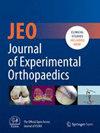Patients treated for infection following ACL reconstruction with graft removal have poorer outcomes than those treated with graft retention: A systematic review
Abstract
Purpose
The purpose of this study was to evaluate patient outcomes following anterior cruciate ligament reconstruction (ACLR) complicated by septic arthritis treated with graft retention versus graft removal protocols. Secondarily, this study aimed to evaluate surgical, demographic and microbial surgical indications for graft retention versus graft removal. We hypothesised that patients who underwent graft removal would have worse outcomes and that patients with septic arthritis caused by more virulent organisms, such as methicillin-resistant Staphylococcus aureus or Pseudomonas aeruginosa, would be more likely to undergo graft removal.
Methods
A systematic review and meta-analysis of literature in the PubMed and Ovid databases regarding the treatment of septic arthritis following ACLR reporting graft retention versus graft removal was conducted. The included studies were published in English, in peer-reviewed journals, with an average minimum follow-up of 1 year, and reported on arthroscopic ACLR, surgical management of infection, graft retention versus graft removal during treatment and outcome measures. Patient demographic, surgical and outcome data were analysed.
Results
Twenty-four studies reporting on 307 patients were included for analysis. Patients who underwent allograft ACLR (p = 0.02) and patients with septic arthritis caused by P. aeruginosa (p = 0.03) were more likely to undergo graft removal. Patients treated with graft removal were treated with more irrigation and debridement procedures (2.7 ± 0.8 vs. 2. ± 1.5, p < 0.01). Patients treated with graft removal had increased laxity on KT-1000 measurement (3.30 ± 134 vs. 1.55 ± 1.23, p < 0.01), and lower 2000 International Knee Documentation Committee Subjective Knee Evaluation scores (66.57 ± 17.08 vs. 80.18 ± 15.21, p = 0.02).
Conclusions
Septic arthritis following ACLR is a devastating complication. Both graft retention and graft removal protocols have been reported and are viable options. Patients treated with graft removal had poorer outcome measures. Septic arthritis caused by P. aeruginosa and allograft ACLR were more likely to be treated with graft removal.
Clinical Relevance
Septic arthritis following ACLR remains an uncommon, but difficult problem. There is minimal literature guiding graft retention versus graft removal treatment protocols.
Level of Evidence
Level IV systematic review of lower-level studies.


 求助内容:
求助内容: 应助结果提醒方式:
应助结果提醒方式:


